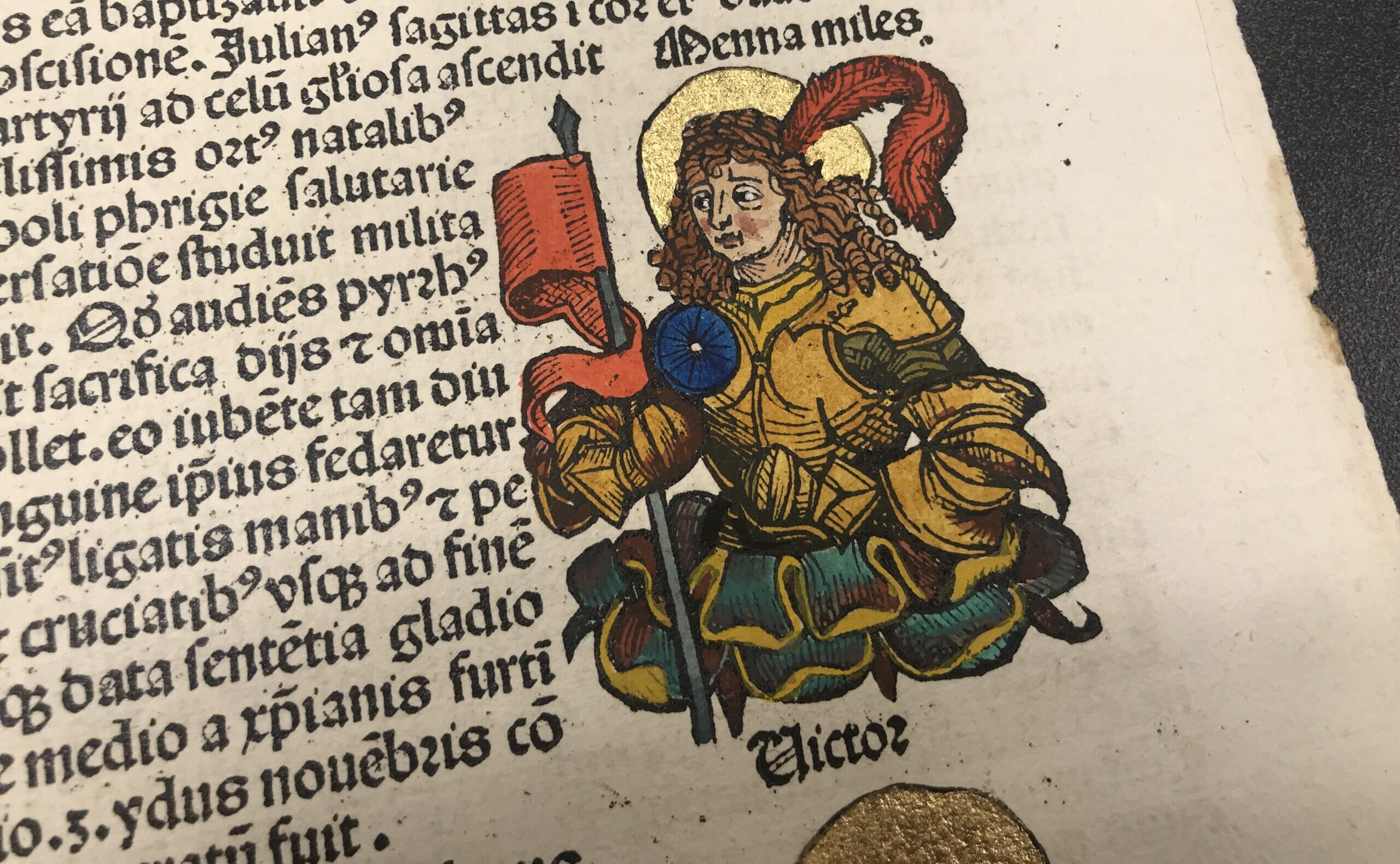
This semester we are welcoming several new items to Special Collections and Rare Books, or the SCRB (pronounced “scrib”)! These new acquisitions will help us teach the history of books and printing along with many items we already own. These rare items are available to view by anyone: students, faculty, and community members. Just stop by the Archives or library reference desk, or send us an email to make an appointment and a librarian will pull them out for you. We are excited to share these new items with you!

Three of our new items are individual pages (or leaves) from early printed books (also called incunabula). You might recall that the Gutenberg Bible, known as the first book printed with the printing press and moveable type in Europe, was printed in the 1450s. Incunabula are books printed in Europe from that date until 1500. They are usually printed on rag paper (made out of cotton fibers from recycled rags, rather than the wood pulp that is used today), with moveable type in typefaces that imitated the scriptorial hand of handwritten medieval manuscript books, which you might know as blackletter or gothic type. We also have three manuscript leaves from 1190, 1290, and 1400. If you get the chance to visit the SCRB, compare the manuscript pages with the early printed ones.

Incunable Leaf from “Opera,” Chapter 31, by Saint Ambrose. 1492.

This leaf looks very similar the handwritten manuscript pages, which often had red additions, or rubrication, added after the main text was written out in black ink to aid in navigating the text. The black text here is printed, but the red is still added by hand. These red initial capitals and paragraph marks show the beginning of a new section or paragraph without having to leave a space, because paper and parchment were too expensive to waste.

Incunable Leaf from the Hortus Sanitatis. Circa 1497.

The Hortus Sanitatis is a work on natural history written during the Middle Ages. This page features four woodcut illustrations of animals including a hen with chicks, roosters, jays, and a griffin. The griffin may seem out of place here, but this book included several mythical creatures.
The design on this leaf replicates what manuscript readers would have been used to, but the paragraph marks and headings are printed in black ink, and the illustrations are printed from wood blocks rather than drawn in by an artist. You will also notice that there are empty spaces in the text for initial capitals to be added—evidently, the customer who purchased this book did not pay to have them drawn in.

Leaf 127 from the Liber Chronicarum. 1493.

This leaf is from the Liber Chronicarum, an illustrated encyclopedia also known as the Nuremberg Chronicle—but it is actually from a pirated version of that book. This text was printed by Johann Schönsperger, and is printed in a smaller format with an abbreviated text compared to the famous work originally printed by Anton Koberger.
This leaf features portraits of Emperors Constantine, Galerius, Severus, Maximinus, Licinius, and Maxentius on one page, and hand colored and illuminated portraits of Saints Christina, Julian, Saturninus, Menas Miles, Victor, and Susanna on the other. The hand coloring and added gold mimic the most extravagant illuminated manuscripts, but all other page content is printed.

The Book Book, by Bo Press Miniature Books. 2010.

This little artist book stands only about 2 inches tall on the shelf, but it shows all the parts of a book with labels as a three-dimensional miniature book diagram. It includes tiny examples of features present in medieval books through modern books, and a dissected view of the binding.

Leave a Reply
You must be logged in to post a comment.